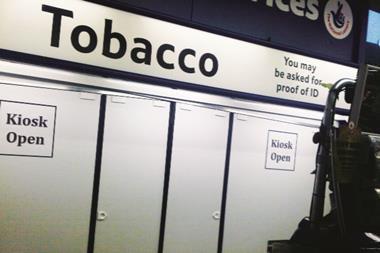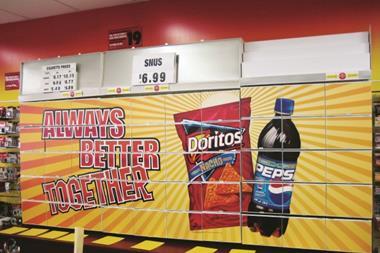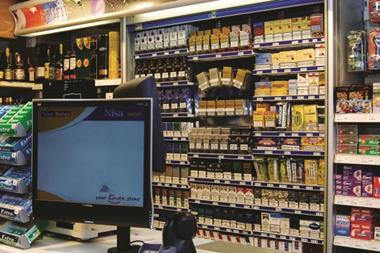Canadian retailers have already had to learn to live with a tobacco display ban. David Rees went to see it in action
hile retailers in the UK are wondering what effect the tobacco display ban might have on their business, c-store operators in Canada have already been there, done that, bought the covers.
The Canadian ban was imposed by the provincial authorities rather than federal government, and so became law at different times in different parts of the country. But just like in the UK, the proposal was controversial and subject to legal challenge. The first province to ratify a ban, Saskatchewan in 2002, actually reversed its decision in 2004 only for it to be re-instated in 2006. But despite the opposition and legal challenges, the ban was fully national by 2008, and retailers have had to learn to adapt.
Now that the ban has had time to bed in, the full effect on tobacco sales can be measured. And the effect is…nothing.
Peter Chappell, senior category manager from Mac’s, which operates 570 stores in Ontario and is part of Alimentation Couche-Tard, Canada’s leading c-store operator and one of the largest groups worldwide, explains that consumer behaviour followed similar patterns wherever the ban was introduced.
“Customers would walk into the store on day one, see the covered gantry and say: ‘Oh, you don’t sell cigarettes any more?’,” he explains. “The dark market had a negative impact on sales for about the first three months.”
Now that the ban has had time to bed in, the full effect on tobacco sales can be measured. And the effect is nothing.
The province of Manitoba has been dark since 2004 and, after the initial drop, sales have followed the national trends closely. A similar story occurred in Saskatchewan, where in the first eight weeks following the ban in 2006 stores suffered a 15-20% drop in tobacco sales. Four weeks later, the sales were back in line with the national trend. And in Ontario, the most populous Canadian province, sales dropped by 10% for 12 weeks after the ban came in, but again returned to normal soon afterwards.
Chappell reports that much of the sales drop-off can be explained by shoppers bulk-buying in the days immediately preceding the bans.
Although sales have levelled out, retail profitability has been hit as tobacco companies used to pay advertising allowances to display certain brands - a typical store might have received up to £9,000 a year for this. Ironically, the end of these incentives meant that tobacco manufacturers’ profits increased.
A further complication is the secondary market in Canada. Indigenous ‘first nation’ people are permitted by government treaty to manufacture and sell tobacco, and are able to significantly undercut mainstream retailers. A tax-paid carton of 200 branded cigarettes retails at about $42 (£26.50), while a bag of 200 sticks bought from a roadside in the native reservation can cost as little as $12 (£7.50).
At the start of the display ban, a lot of stores reduced the number of SKUs available. But this was a mistake, argues Chappell. “It’s important to keep the same listings,” he says. “When consumers decide where to shop, product availability is the top criteria. If you cut out their favourite brands, they will go elsewhere.”
But, of course, the main practical step that retailers had to take was to decide how to hide tobacco from view of customers.
Regulations vary province by province, so a variety of solutions have been introduced. These include putting tobacco in drawers, either on the back wall or under the till register, overhead cabinets, sliding panels, horizontal ‘shutter’ panels, vending machines and even a store within a store, where underage customers can be prohibited from entering.
Each has its own pros and cons, but most are expensive, and in some cases create additional problems such as staff complaints and even injuries. Many Canadian outlets use drawers, which are attractive and secure, but are costly as they have to be robust and easy for staff to use while avoiding accidentally exposing brands to the public.
Chappell recommends a robust metal cover (or flaps, depending on the local regulations) over the traditional gantry, and to use the space as an opportunity to sell advertising. Even this can prove problematic, as many companies aren’t comfortable with being associated with tobacco, but beer advertising has proved to be a good money-spinner in Quebec. Another option is to use the space to promote own brands or high-margin products such as coffee through posters or video screens.
And, as a final point, there’s probably no need to spend heavily on price lists. At Mac’s so few shoppers asked for the brand books that, in a test after the ban by head office staff, most of the company’s store managers didn’t even know where they were kept.
“For shoppers, transactions are all about speed and convenience, so you wont need the book,” explains Chappell.




























No comments yet